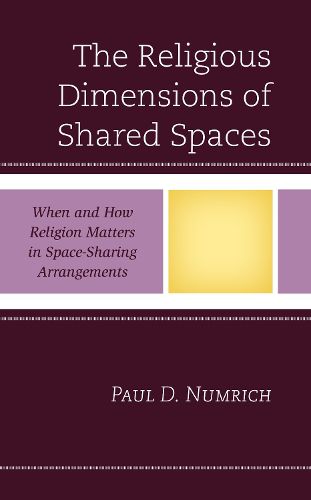Readings Newsletter
Become a Readings Member to make your shopping experience even easier.
Sign in or sign up for free!
You’re not far away from qualifying for FREE standard shipping within Australia
You’ve qualified for FREE standard shipping within Australia
The cart is loading…






Space sharing by groups and organizations is widespread in the United States, from commercial partnerships, to government and private sector joint use agreements, to the use of public facilities and commons, and more. Drawing upon a variety of historical examples and contemporary cases, The Religious Dimensions of Shared Spaces offers a focused and systematic analysis of space sharing involving religious groups or organizations. All space-sharing arrangements are similar in most respects, so what difference does it make when religious groups or organizations are involved? How do they invest meaning in the spaces they use and share, including "sacred space"? When and why do they enter into space-sharing arrangements with other parties, religious and/or secular? How do religious space sharers structure and maintain their arrangements, including handling tensions that arise? What can secular space sharers learn from their religious counterparts, and vice versa? The book also teases out when religion does not matter in space sharing, even when religious groups or organizations are involved. Case studies include internal congregational groups that negotiate the use of shared facilities, arrangements between congregations and external groups or organizations, multifaith partnerships, and shared spaces in secular venues.
$9.00 standard shipping within Australia
FREE standard shipping within Australia for orders over $100.00
Express & International shipping calculated at checkout
Space sharing by groups and organizations is widespread in the United States, from commercial partnerships, to government and private sector joint use agreements, to the use of public facilities and commons, and more. Drawing upon a variety of historical examples and contemporary cases, The Religious Dimensions of Shared Spaces offers a focused and systematic analysis of space sharing involving religious groups or organizations. All space-sharing arrangements are similar in most respects, so what difference does it make when religious groups or organizations are involved? How do they invest meaning in the spaces they use and share, including "sacred space"? When and why do they enter into space-sharing arrangements with other parties, religious and/or secular? How do religious space sharers structure and maintain their arrangements, including handling tensions that arise? What can secular space sharers learn from their religious counterparts, and vice versa? The book also teases out when religion does not matter in space sharing, even when religious groups or organizations are involved. Case studies include internal congregational groups that negotiate the use of shared facilities, arrangements between congregations and external groups or organizations, multifaith partnerships, and shared spaces in secular venues.